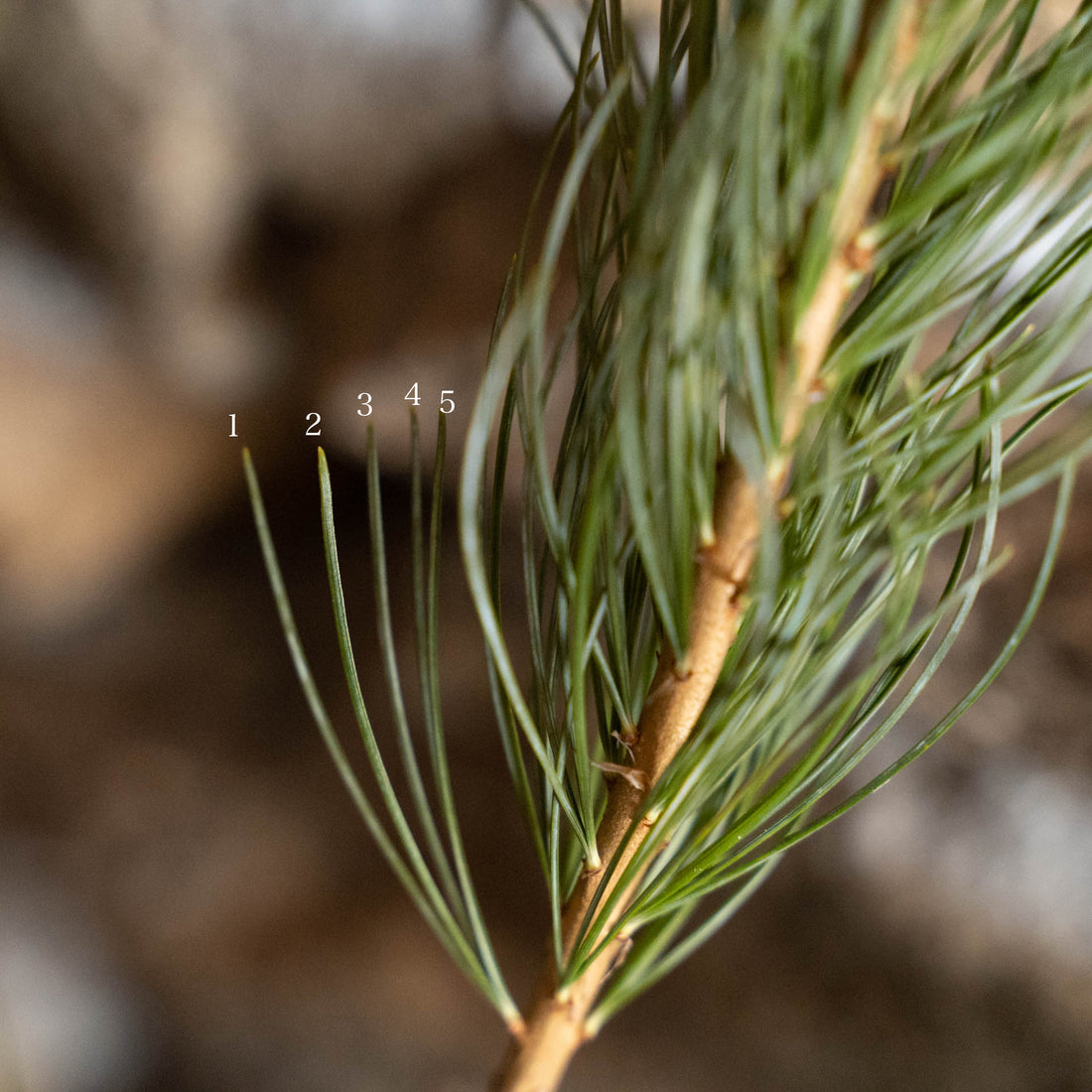北海道から九州までの冷温な地域に自生していて、樹高は30メートルに及ぶものもいます。アカマツなどに比べると通直に育ちます。
別名ゴヨウマツ(五葉松)と言われるように、針状の葉が5本ずつ束になってついています。一般的にマツと言われるのはクロマツかアカマツで、これらは2本の葉が束になっています。実は、3本束になっているマツもあり、一部は日本にも生えています。公園などでマツを見かけたら、葉の本数を数えてみてください。
飛騨にはまだまだたくさんのヒメコマツが自生していますが、日本各地では減少傾向にあります。FUSHIの所有する森林内にも多く自生していますが、植林されたヒノキの間に点在しており以前から不思議でした。いろいろ人に聞いてみると、どうもヒノキと共に植林されたようです。ヒノキは木材として高く売れるので販売用、ヒメコマツは自分たちで使うためです。なので、飛騨ではヒメコマツを使った古い住宅がちらほら残っています。
ちなみに、盆栽の世界でも、育てやすい樹種としてヒメコマツは人気があるようです。岩上や風の強い土地で育つものの中には、自然に盆栽風になったものも見られます。庭木にも使われるので、意外と身近にあるかもしれません。探してみてください。
It grows naturally in cool-temperate areas from Hokkaido to Kyushu, with some trees reaching 30 meters in height. It grows more upright than the Japanese red pine (Pinus densiflora). It is also known as "Goyomatsu (five-leaf pine)," and its needle-like leaves are arranged in clusters of five. The most common pine trees are the black pine and the red pine, which have two leaves in a bunch. In fact, some pines have three leaves in a bunch, and some of them grow in Japan. If you see a pine tree in a park, try counting the number of leaves.
There are still many Himekomatsu trees growing wild in Hida, but they are on the decline in other parts of Japan. I asked around and found out that they were planted along with the cypress trees. Hinoki trees are sold at a high price as lumber and Himekomatsu trees are for their own use. Therefore, there are still some old houses in Hida that are made of Himekomatsu. Incidentally, Himekomatsu is also popular in the bonsai world as an easy-to-grow species. Some of those that grow on rocks or in windy areas can be seen to have a natural bonsai style. It is also used as a garden tree, so you may be surprised to find it around you.



